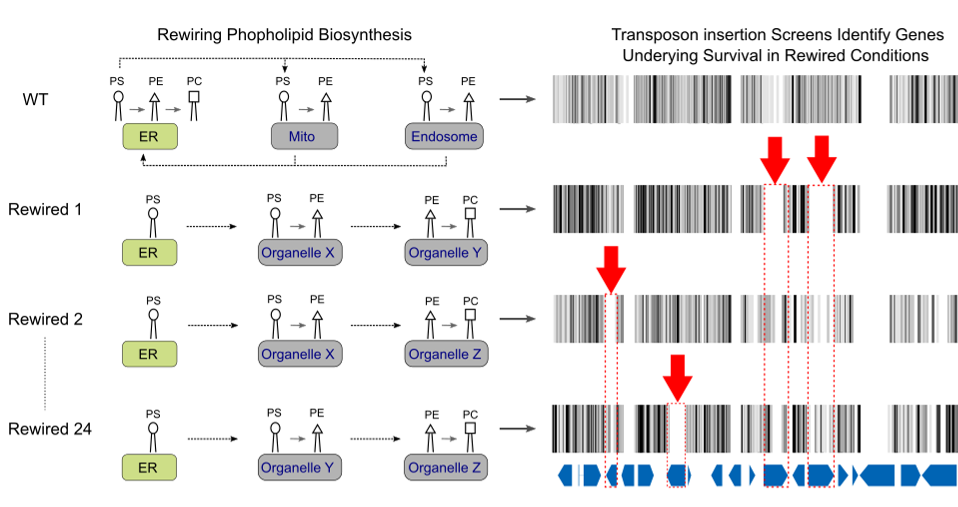Rewiring phospholipid biosynthesis in yeast reveals novel regulators of lipid homeostasis
A recent "EMBO Journal" paper by the Peter group (IBC) and the former Kornmann group (now at the University of Oxford), reveals resilience of yeast cells to membrane perturbations and a novel role for Csf1, a highly conserved lipid transport protein in homeoviscous adaptation of the lipidome.

The organelles of eukaryotic cells differ in their membrane lipid composition. This heterogeneity is achieved by the localization of lipid synthesizing and modifying enzymes to specific compartments, as well as by intracellular lipid transport that utilizes vesicular and non-vesicular routes to ferry lipids from their place of synthesis to their destination. For instance, the major and essential phospholipids, phosphatidylethanolamine (PE) and phosphatidylcholine (PC), can be produced by multiple pathways and, in the case of PE, also at multiple locations. However, the molecular components that underlie lipid homeostasis as well as the routes allowing their distribution remain unclear.
Here, we present an approach in which we simplify and rewire yeast phospholipid synthesis by redirecting PE and PC synthesis reactions to distinct organelles using chimeric enzymes fused to specific targeting motifs. In rewired conditions, viability is expected to depend on homeostatic adaptation to perturbations and on efficient interorganelle lipid transport. We therefore performed genetic screens to identify factors involved in both processes.
Among the candidates identified, we find genes linked to transcriptional regulation of lipid homeostasis, lipid metabolism, and transport. Of note, we identify a requirement for Csf1—an uncharacterized protein harboring a Chorein-N lipid transport motif—for survival under certain rewired conditions as well as implicate it as the first lipid transport protein known to be essential for adaptation to cold temperatures.
Link to the paper in external page EMBO journal